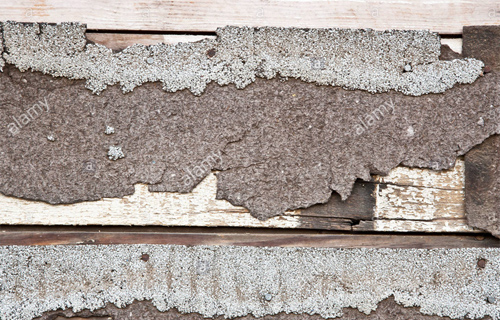Do You Have Asbestos Shingles on Your House?

Between the 1930s and the 1970s, asbestos, a fibrous mineral that was extensively used in industries such as construction and textiles made its way inside the homes of the majority of Americans. The remarkable properties possessed by the material such as durability, strength and astounding resistance to high temperatures determined both the businessmen and the average person of the era to think of it as a miracle mineral.
How Asbestos Shingles Ended Up on American Houses
The uses of asbestos were marketed not only creatively, but also in a profitable manner. For instance, while the fibers were for the most part used for insulation purposes, given the above-mentioned qualities of the material, asbestos was also incorporated in the cement destined for the making of roof shingles. Manufacturers discovered that asbestos-based shingles would not be prone to rotting and they would remain undamaged by insects. For decades, until the ban on most asbestos uses that was set in motion in the 1970s, the American society placed a great deal of value on shingles containing asbestos, and they much preferred it over the traditional roof coverings.
The cost of this type of roof covering was another factor that contributed to its popularity since it was less expensive than the more traditional options for roofing, which was noticeable when the costs for shipping and installation would add up. When big manufacturers of the day, such as Johns-Manville, Carey or Eternit figured out working with different kinds of pigmentation on their materials and gave the American customers the choice of color, the sales for the asbestos-cement roof shingles skyrocketed.
If you are the owner of a house or of another type of building that has a shingled roof, you should make the assumption that it might contain asbestos, especially if it was built in the last century in the period in which asbestos usage was not regulated. There is no way for an untrained eye to spot asbestos or the lack of it with accuracy, therefore, the best course of action would be to have an asbestos professional involved in your home endeavors so that you can know for sure the kind of risks you are exposed to and take the necessary steps to minimize them.
How to Handle the Asbestos Shingles on Your House
If you have been made aware of the fact that you have asbestos shingles on your house, then there are a couple of ways that you could go about the issue depending on your particular objectives. In this sense, if you determine that the shingles are in a good condition, i.e. they are in one piece and not crumbling, then the asbestos-containing product does not pose a threat to your health and you have the option of leaving it undisturbed.
The shingles become a problem when they are falling apart because that is the scenario in which asbestos fibers are being released in the surrounding environment, making it easy for them to be inhaled or swallowed. Even though it is not followed by an immediate reaction, the fibers are extremely toxic and after a decades-long period of latency, they are known to evolve into cancerous diseases affecting vital organs such as the lungs, the heart or the abdomen.
In the case in which removal has to be performed, then you should be aware of the fact that this kind of procedure is the one which poses the greatest risk because of the inevitability of creating toxic asbestos dust. Removal may be necessary if the shingled roof is damaged beyond repair or it may be the choice of the homeowner to have it replaced as part of a bigger restoration project.
The safest approach would be to hire an asbestos professional that has the fitting experience and equipment for the job to be done properly without risking any unwanted lingering health side effects. Even with a specialist on site, however, you should show extra caution and stay away from taking initiatives that could potentially endanger everybody. For example, you definitely not pick up a broom and start sweeping the toxic debris, spreading the particles all over the place.
If you decide to stick to a do-it-yourself approach, then you should make sure you follow at least the most basic safety precautions in order to keep the hazardous menace at a minimum. For this reason, you should consider:
- sealing the work area with plastic sheets
- purchasing goggles, gloves, boots, disposable coveralls and a respirator with a HEPA filter
- dampening the work area at all times
- keeping the shingles in one piece
- disposing of the waste in a landfill authorized for asbestos.
